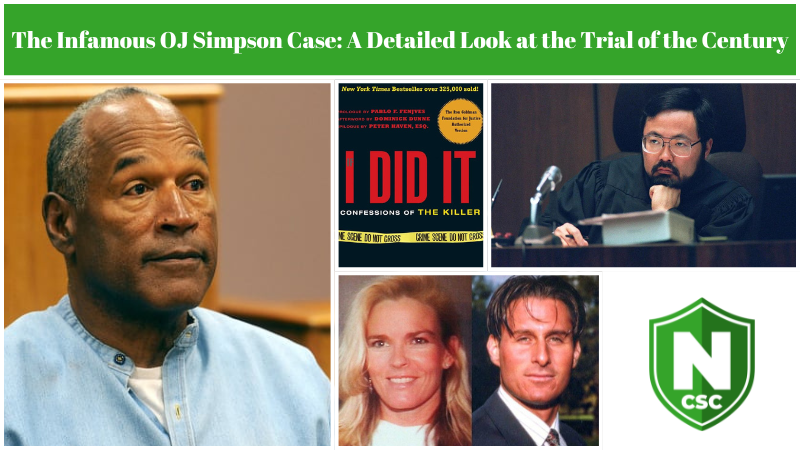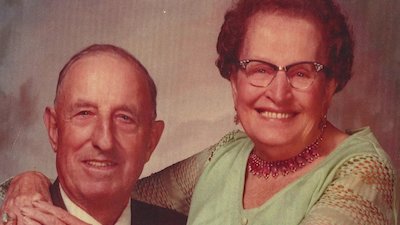What Was The St. Valentine’s Day Massacre?
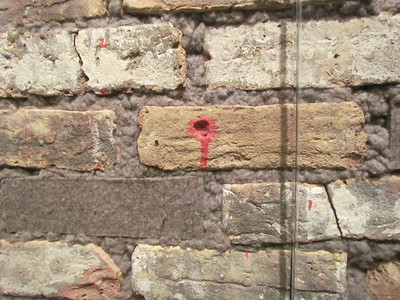
Photo Courtesy of Stephen Hogan, Flickr
Valentine’s Day is known for romance and expressing how much your loved one means to you. But did you know that there is dark history to the day that shaped modern America? When members of a Chicago gang murdered seven men, the event known as the St. Valentine’s Day Massacre changed history.
Reader Discretion is Advised: This story contains graphic images.
The Morning of February 14, 1929
At 10:30 AM, on Thursday, February 14, 1929, seven men were found dead in an urban Chicago garage. Two were heavily dressed in overcoats, suits, ties, and hats, while the other half were dressed as police officers. The two fraudulent police officers led the other assailants out of the garage with a few men that had been held at gunpoint.
The perpetrators had lined up the victims against the garage wall and gunned them down with weapons including Thompson submachine guns. Not a whole lot is known about the motive or who was responsible for the incident, but all evidence about the victims point to gang violence.
What We Know About the Victims That Died
Five victims were identified as a part of George “Bugs” Moran’s North Side Gang, including leader Moran’s brother in law. Among the others, Moran’s bookkeeper, business manager, gang enforcers, collaborators, and gang mechanic were also shot. One member was alive when police arrived at the scene, but died shortly after being questioned at the hospital.
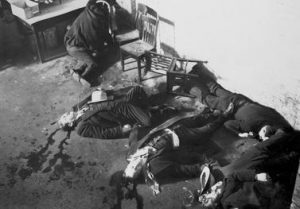
Pictured above: The bodies of seven murdered men from the Chicago crime scene. (Source: Chicago History Museum)
The victims that died included:
- Albert Kachellek (aka James Clark); Moran’s second in command and brother-in-law
- Albert Weinshank; Moran’s bookkeeper and business manager of several cleaning and dyeing operations
- Reinhardt H. Schwimmer; former optician turned gambler and gang associate
- John May; gang mechanic
- Frank and Peter Gusenberg; two gang enforcers
Frank Gusenberg was found alive at the scene but an examination indicated he had been fatally wounded. He was stabilized and questioned. When asked who shot him, he replied “no one shot me.” Three hours later, he died. The autopsy later determined 14 bullets all over his body.
How Did The St. Valentine’s Day Massacre Change History?
The incident occurred during the height of Prohibition, when the Chicago Police Department was facing higher than average criticism. Most of the physical evidence had been burned and several perpetrators couldn’t be conclusively identified, but most of the community believed they were somehow associated with gang members of Al Capone. Despite the damning evidence, investigators turned their attention to the Jewish Purple Gang instead, causing delays that may have allowed Capone’s gang time to destroy even more evidence.
The locals in the Lincoln Park neighborhood were well aware of the operation Capone and Moran had going with liquor shipments from Detroit. Angered by the strict Prohibition laws as well as the increasing Prohibition-related gang violence in the area, there was a public outcry for change.
To make matters worse, the community was all too aware of the alliances Chicago politicians had been making with gangs like Capone. The corruption didn’t end until FDR was elected and began reforming prohibition and firearm laws. It was consistently used as an example on how Prohibition brought unnecessary gang violence in otherwise safe neighborhoods, and is still mentioned in textbooks for how Prohibition laws failed to address the real concerns.
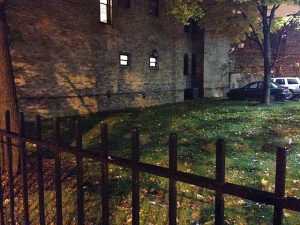
The nursing home building and parking lot where the garage once stood.
The Location Today
The address of the garage was 2122 North Clark Street, in the Lincoln Park neighborhood of Chicago’s North Side. The garage was demolished in 1967 and the lot is now used as parking for a nearby nursing home.
A few of the bricks from the wall in the garage were purchased by a Canadian businessman and displayed in various crime scene displays. Later, they were purchased by the Mob Museum in Las Vegas.
The event bears an eerie resemblance to similar tension America has towards law enforcement today, not just on corruption but on how officers are trained to handle situations like domestic homicide.
If you’ve found this article interesting, please share it with your friends on social media!
Hungering for more true crime? Take a look at the famous murders that changed America.



